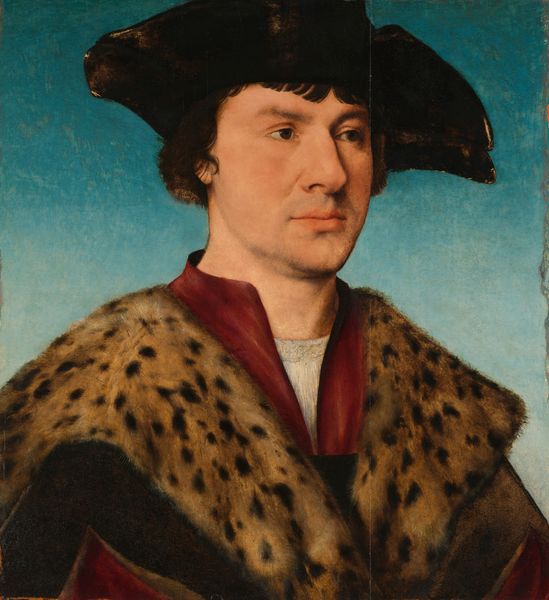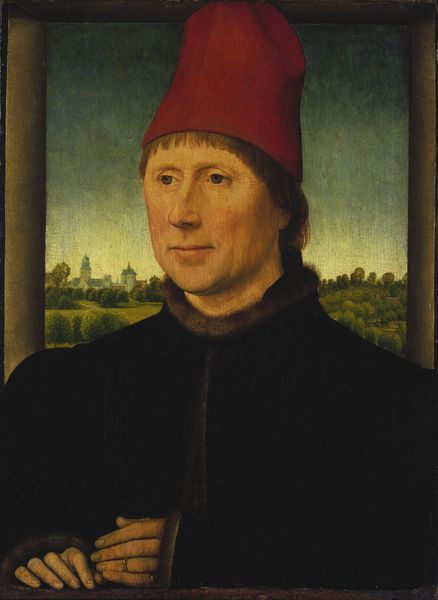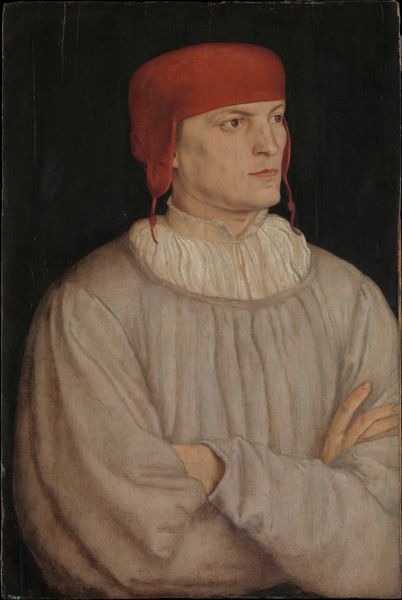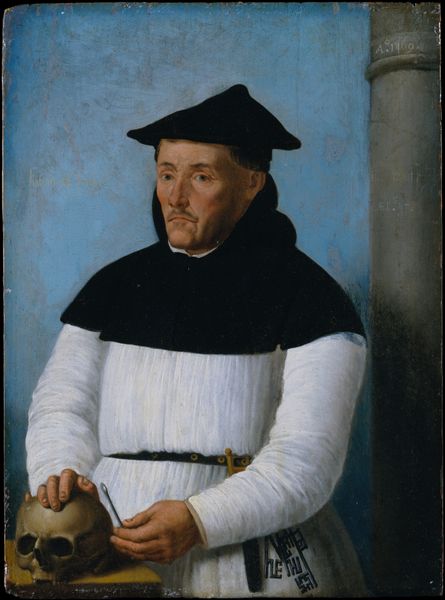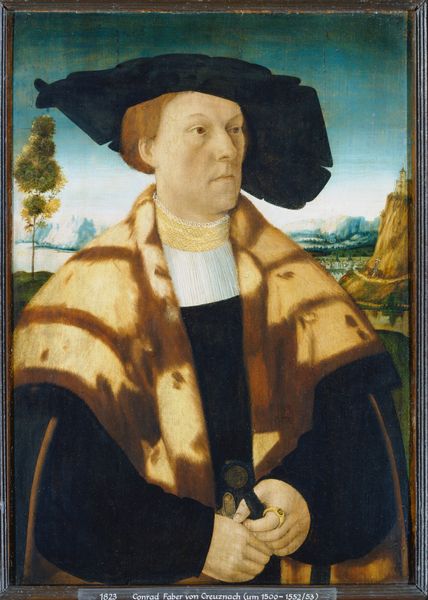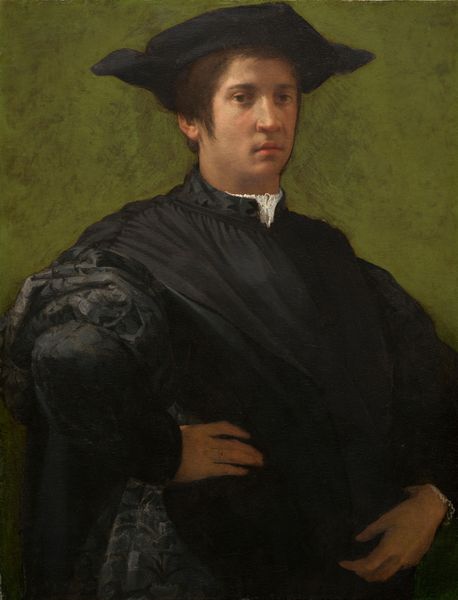
painting, oil-paint
#
portrait
#
painting
#
oil-paint
#
11_renaissance
#
men
#
northern-renaissance
#
portrait art
Dimensions: Overall 11 x 7 3/4 in. (27.9 x 19.7 cm); painted surface 10 5/8 x 7 1/4 in. (27 x 18.4 cm)
Copyright: Public Domain
Editor: We're looking at "Portrait of a Man in a Chaperon," painted in oil sometime between 1440 and 1450, and housed at the Met. The sitter’s gaze, the way his hands are clasped…it strikes me as deeply contemplative. What elements of the composition do you find most compelling? Curator: The emphasis on surface detail is remarkable. Observe the textures: the velvety folds of the chaperon, the precise rendering of the skin, and the way light subtly models the planes of the face. Do you see how these meticulous observations function almost like a scientific cataloging of appearances? Editor: Absolutely, it’s incredibly realistic. And the red of the chaperon really pops against the dark background. It almost creates a geometric frame around the face. Curator: Precisely. The colour relationships, too, are thoughtfully arranged. Note the way the red is echoed in the collar and the flower he holds, creating a visual harmony. The subdued palette serves to focus attention on the formal qualities of the portrait. Is there anything that stands out to you about the space? Editor: There's not much background at all, and what is there is in deep shadow. Curator: Yes, the flatness of the space and simplification of form serve to heighten our awareness of the picture plane itself, doesn't it? By minimizing the illusion of depth, the artist directs our gaze to the intricate play of lines, colors, and textures. It prompts questions of visual language, rather than biographical details, of the sitter. Editor: So, focusing on these formal elements allows us to move beyond simply identifying the subject and consider the painting as an object in itself? Curator: Precisely. Understanding art starts with what we see, not necessarily who or why. Editor: That gives me a completely new perspective! I always get caught up trying to know the background first. Curator: Consider that careful attention to detail informs more than simply mimetic appearances.
Comments
No comments
Be the first to comment and join the conversation on the ultimate creative platform.

